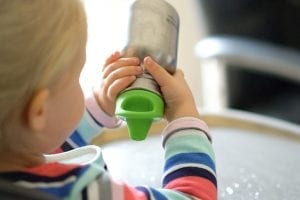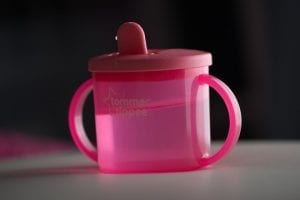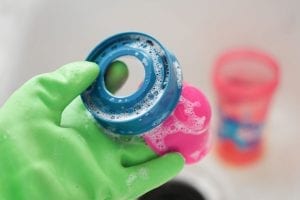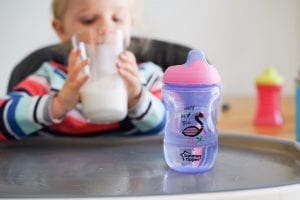A sippy cup is a training cup dedicated to helping children drink their beverages without spilling. It is usually made up of plastic with a screw-on or snap-on lid. Using this kind of cup guides your kid into switching from a bottle to a regular cup. They also help improve a baby’s basic motor skills, such as the hand-mouth and hand-eye coordination.

When transitioning into a sippy cup, there are few reminders to keep in mind. Always remember the following do’s and don’ts for a smoother and safer transition to a using a sippy cup.
Do Not Let Your Child Take The Sippy Cup To Bed

These baby cups are not made for children in bed. First, there is a high possibility your baby will create a mess on their blankets. This practice is also not advisable since the baby might fall asleep with the sippy cup in their mouth. This might result in sugars pooling inside the mouth, which will eventually lead to tooth decay.
Do Choose The Best Sippy Cups
Choosing the best sippy cup for your baby is crucial. There are various conditions to know if the cup you have bought is the perfect one. Below are the things that you need to consider when purchasing your first baby sippy cups.
- Choose a cup that is easy to grip. Sippy cups that are wide around the body are not the best sippy cups. Holding them will be challenging for toddlers with little hands. Look for cups that have handles or are narrow in the middle. Some Amazon sippy cups follow this feature. Using a sippy cup that they can hold on their own will facilitate more independent learning.
- Start using a sippy cup that has a soft spout. This way, it won’t be too hard and damage your baby’s gums. Those cups with soft spouts will also lessen the hassle during the transition.
- Zippy cups with measurements on the side will be helpful for parents. This feature will guide the parents into tracking the baby’s drinks (may it be milk, juice, or a drinking formula) to avoid overconsumption.
Shop around. Different babies have sippy cups that fit them. You might also want to try to buy sippy cups amazon.
Use Water As The First Liquid

Introduce water as the very first drink in your baby’s sippy cup. Drinking this liquid will be easier for the toddler since it is less viscous than the other beverages. Water will flow without any difficulty, so your baby will be able to suck it faster and easier.
Do Not Overfill The Cup
If your baby is only trying a sippy cup for the first time, do not overfill the cup. Start giving them a quarter-full until they fully master the technique of using it. This precautionary measure will also avoid the big mess. Once their skills have matured, add content gradually for the baby to adjust their weight.
Clean The Cup On A Regular Basis

Make sure that the sippy cups are clean all the time. Try using warm water once your child finishes using it to kill the bacteria. Also, you need to ensure that the lid and cup are entirely dry after washing. Once the cups collect droplets of liquid, there is a large chance that bacteria and mold will grow. Hence, it will most likely make the child sick. Using a sippy cup may require proper maintenance, but nothing beats the signifance of safety.
Do Not Rely On The Sippy Cup For Too Long

Avoid using the baby cup for a long period. As soon as you think your child can handle it, you need to transition them to a regular cup immediately. On average, most children aged two years old and above can already properly manage a two-handle open cup.
Always keep all these reminders in mind for a smoother transition to sippy cups. Before you even know it, your sweet baby will be drinking from a regular cup in no time!
FAQs
Last Updated on January 12, 2023 by Mary Cimeni
DISCLAIMER (IMPORTANT): This information (including all text, images, audio, or other formats on FamilyHype.com) is not intended to be a substitute for informed professional advice, diagnosis, endorsement or treatment. You should not take any action or avoid taking action without consulting a qualified professional. Always seek the advice of your physician or other qualified health provider with any questions about medical conditions. Do not disregard professional medical advice or delay seeking advice or treatment because of something you have read here a FamilyHype.com.